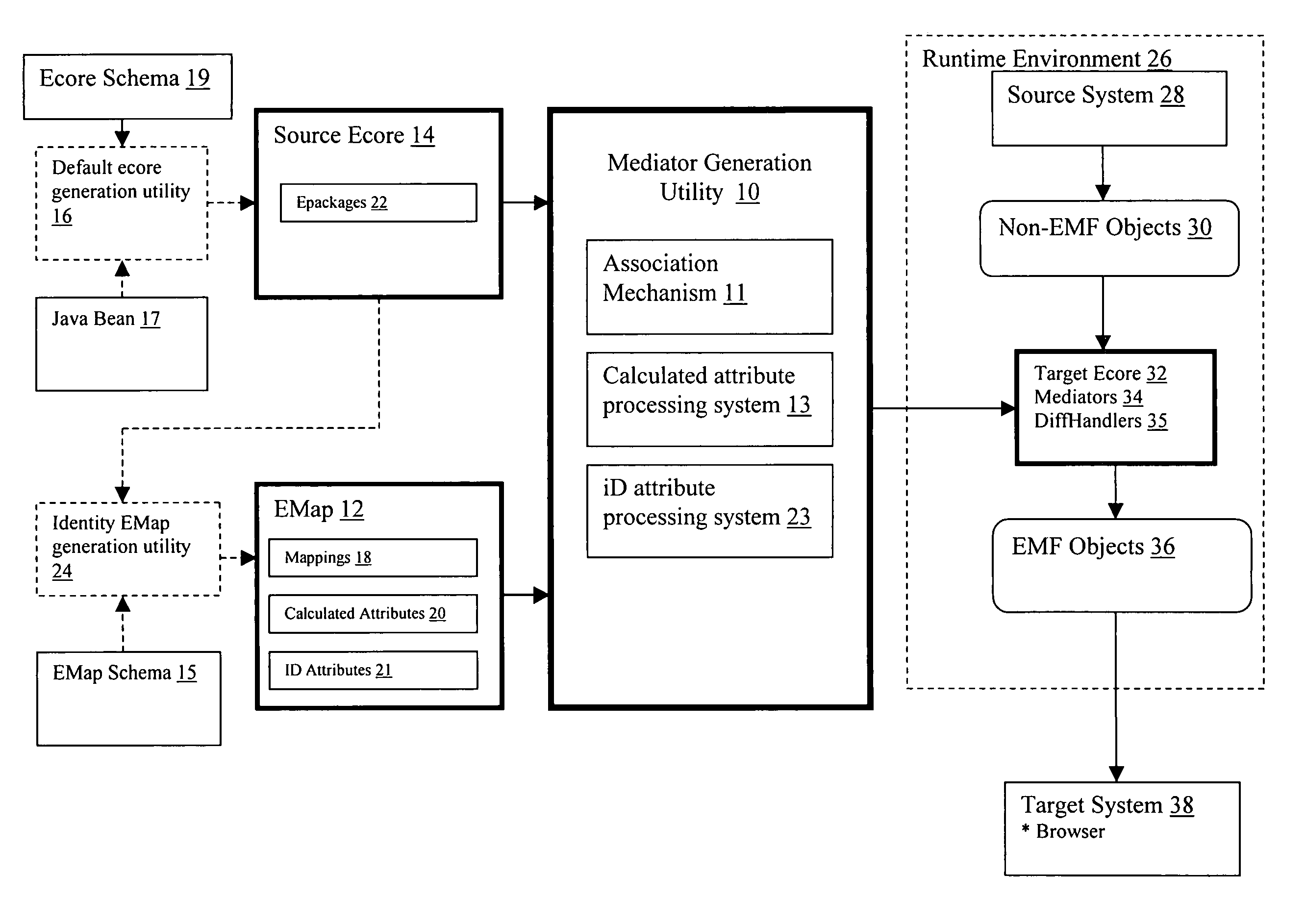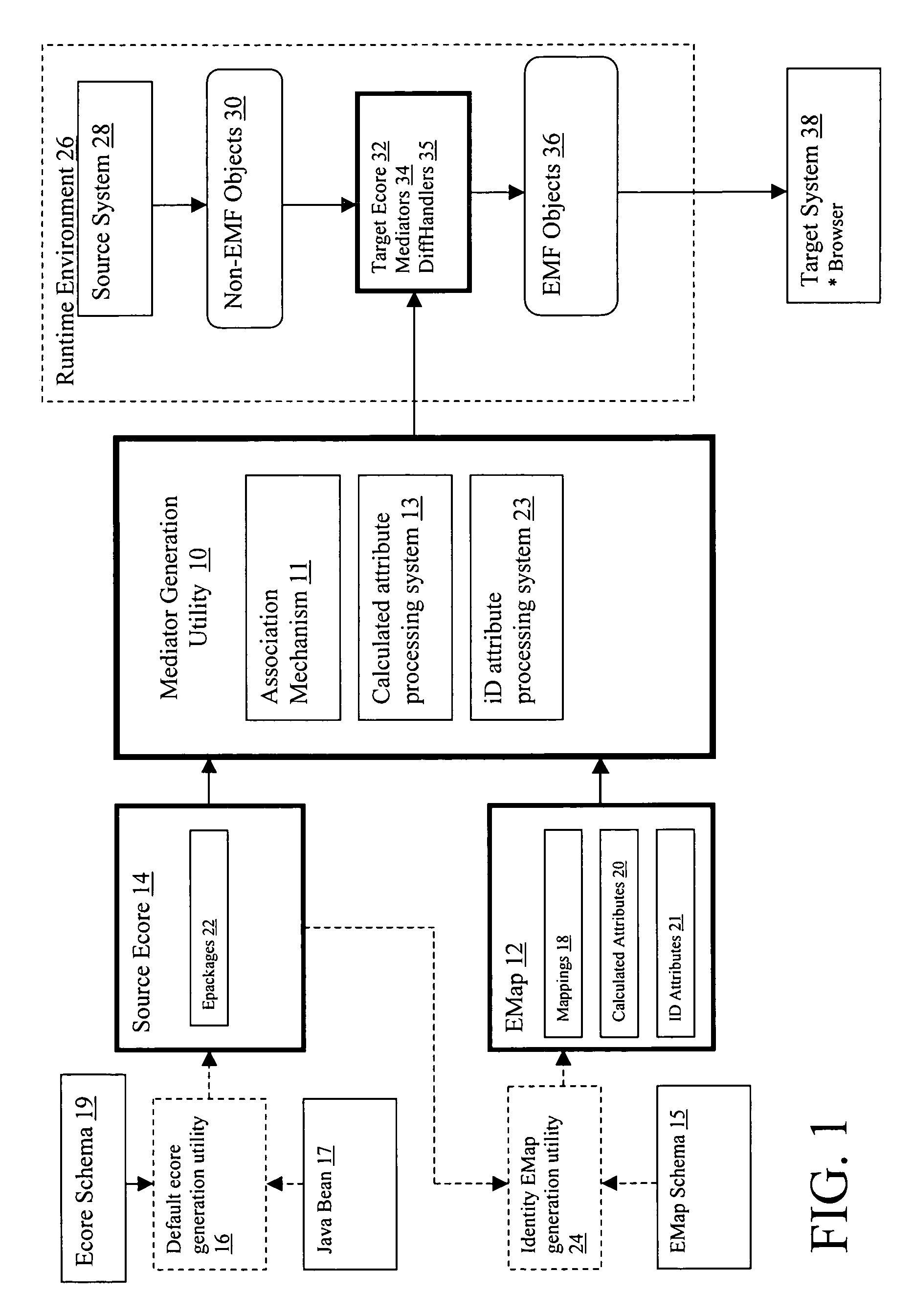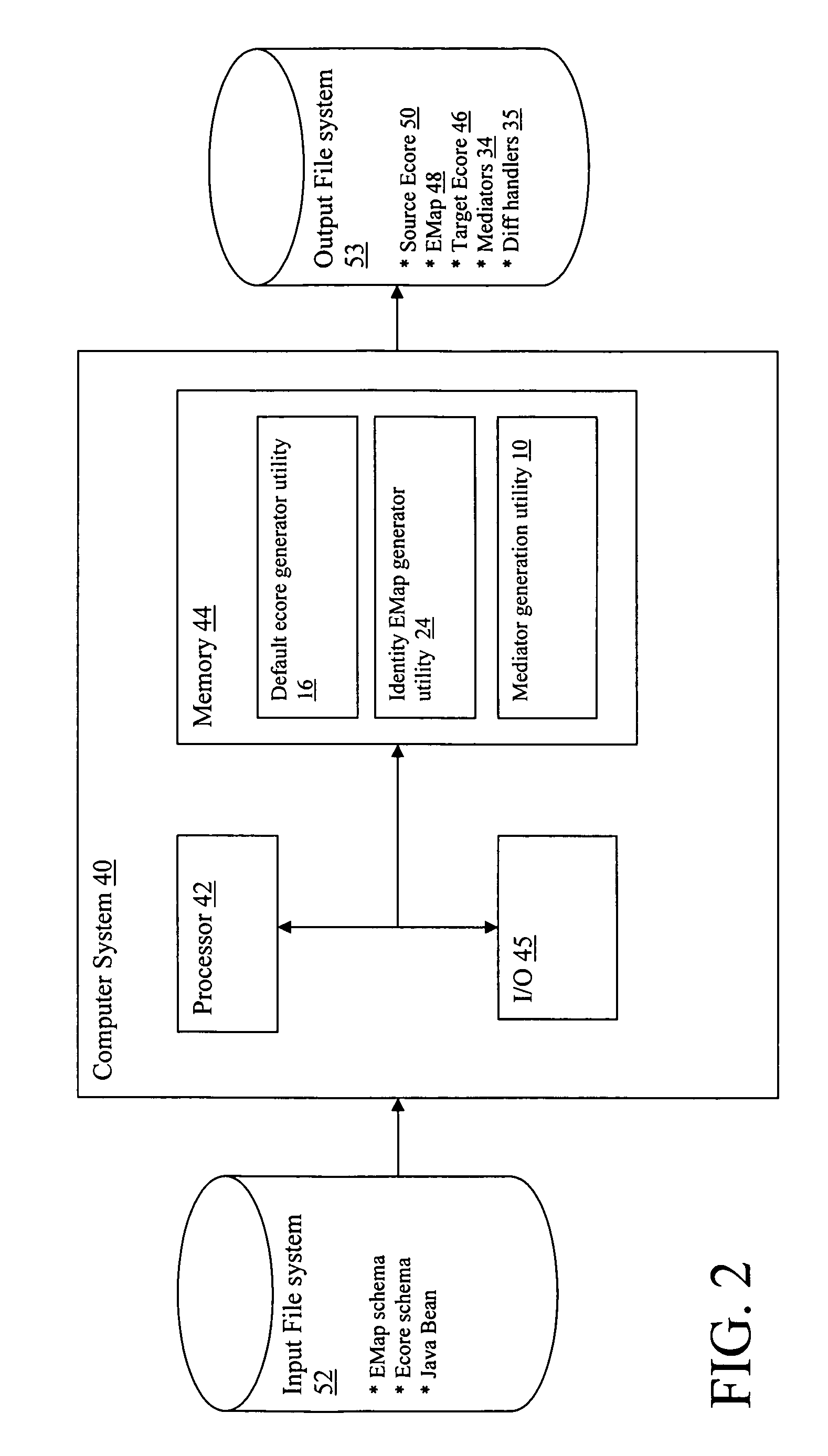System and method for utilizing non-EMF based objects in an EMF environment
a technology of emf and environment, applied in the field of system and method for utilizing nonemf based objects in an emf environment, can solve the problem of not being able to introduce emf-based modeling,
- Summary
- Abstract
- Description
- Claims
- Application Information
AI Technical Summary
Benefits of technology
Problems solved by technology
Method used
Image
Examples
Embodiment Construction
Overview
[0021] As noted above, Eclipse Modeling Framework (EMF) is an open source project (http: / / www.eclipse.org / emf) that provides a modeling framework and code generation facility for building tools and other applications based on a structured data model. The core EMF framework includes a meta model (referred to as “ecore” or “ecore model”) for describing data models and runtime support for the data models including change notification, persistence support with default XMI serialization, and a reflective API for manipulating EMF objects generically. The ecore model describes a data model in terms of eClassifiers and eStructuralFeatures (eAttributes, and eReferences). The corresponding EMF runtime objects are called EObjects.
[0022] Service Data Objects (SDOs) are designed to simplify and unify the way in which applications handle data. Using SDO, application programmers can uniformly access and manipulate data from heterogeneous data sources, including relational databases, XML...
PUM
 Login to View More
Login to View More Abstract
Description
Claims
Application Information
 Login to View More
Login to View More - R&D
- Intellectual Property
- Life Sciences
- Materials
- Tech Scout
- Unparalleled Data Quality
- Higher Quality Content
- 60% Fewer Hallucinations
Browse by: Latest US Patents, China's latest patents, Technical Efficacy Thesaurus, Application Domain, Technology Topic, Popular Technical Reports.
© 2025 PatSnap. All rights reserved.Legal|Privacy policy|Modern Slavery Act Transparency Statement|Sitemap|About US| Contact US: help@patsnap.com



